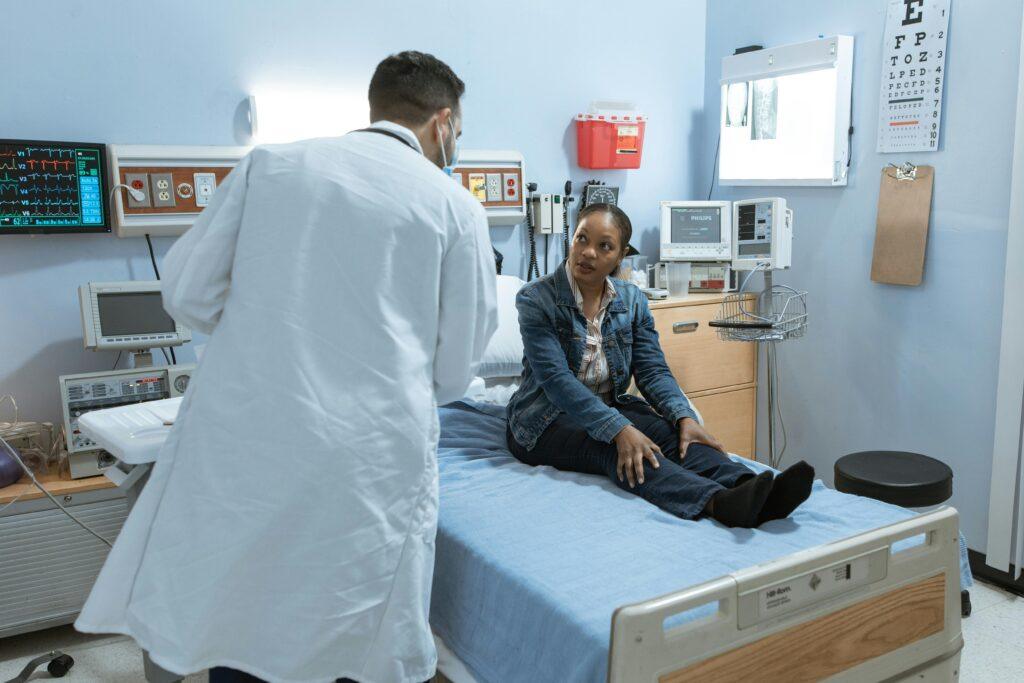Introduction to Fracture Assessment
Proper fracture assessment is critical for accurate diagnosis and treatment. This guide covers the essential steps—from taking a detailed patient history to performing a thorough physical examination—to help medical professionals identify fractures, assess severity, and determine appropriate management strategies.

Step 1: History of Injury
Understanding the mechanism of injury is crucial for predicting fracture patterns and associated complications.
Key Questions to Ask:
- Mechanism of Injury
- Example: A valgus force (outer knee impact) may cause:
- Medial collateral ligament (MCL) tear in young patients
- Lateral tibial plateau fracture in elderly patients (due to bone weakness)
- Example: A valgus force (outer knee impact) may cause:
- Energy Involved
- Low-energy (e.g., simple fall) vs. high-energy trauma (e.g., car crash)
- High-energy injuries require assessment for additional fractures or internal injuries.
- Post-Injury Symptoms
- Can the patient bear weight on the injured limb?
- Is pain improving or worsening?
- “Red flag” symptoms (e.g., night pain, fever, weight loss) may indicate infection or malignancy.
Step 2: Medical & Social History
Medical History
- Chronic conditions (e.g., diabetes, osteoporosis) affecting healing
- Anticoagulant use (increases bleeding risk during surgery)
Social History
- Smoking (delays bone healing)
- Occupation & hobbies (influence rehabilitation needs)
Step 3: Physical Examination
Follow the Look-Feel-Move-Neurovascular approach.
1. Look (Visual Inspection)
- Swelling (localized → diffuse)
- Bruising (develops over hours/days; location indicates injury type)
- Abrasions/Lacerations (may suggest open fracture)
- Deformity (indicates displacement; requires urgent reduction)
2. Feel (Palpation)
- Start away from the injury site to build patient trust.
- Bony tenderness (pain from all directions = likely fracture)
- Soft tissue tenderness (localized pain = muscle/ligament injury)
3. Move (Range of Motion)
- Active movement (patient moves the limb)
- Passive movement (examiner moves the limb)
- Loss of movement may indicate:
- Fracture
- Tendon rupture
- Neurological damage
4. Neurovascular Assessment (Critical!)
- Pulses (compare to uninjured side; mark with “X”)
- Capillary refill (should be <2 seconds)
- Motor & sensory function (nerve damage check)
When to Suspect a Serious Injury
| Symptom | Possible Condition |
|---|---|
| Severe deformity | Displaced fracture |
| No pulse distal to injury | Vascular compromise (emergency) |
| Inability to move limb | Nerve/tendon damage |
| Worsening pain & swelling | Compartment syndrome |
Conclusion: Why Proper Assessment Matters
A systematic fracture assessment ensures:
✅ Accurate diagnosis (preventing missed injuries)
✅ Proper treatment planning (surgical vs. non-surgical)
✅ Early detection of complications (nerve damage, infection)
For high-energy trauma patients, always rule out polytrauma (multiple injuries).
Read More Orthopedics Topics: Orthopedics Surgery
Further reading from authentic sources:
- American Academy of Orthopaedic Surgeons (AAOS) – Fracture Diagnosis
https://orthoinfo.aaos.org/en/diseases–conditions/fractures-broken-bones/ - NIH – Trauma Assessment Protocols
https://www.ncbi.nlm.nih.gov/books/NBK470294/ - Journal of Orthopaedic Trauma – Physical Exam Techniques
https://journals.lww.com/jorthotrauma/pages/default.aspx - UpToDate – Initial Fracture Management
https://www.uptodate.com/contents/fracture-evaluation-and-management - Medscape – Neurovascular Assessment
https://emedicine.medscape.com/article/98322-technique - OTA – Fracture Classification Systems
https://ota.org/education/fracture-classification - Cleveland Clinic – Red Flags in Fractures
https://my.clevelandclinic.org/health/diseases/15241-fractures